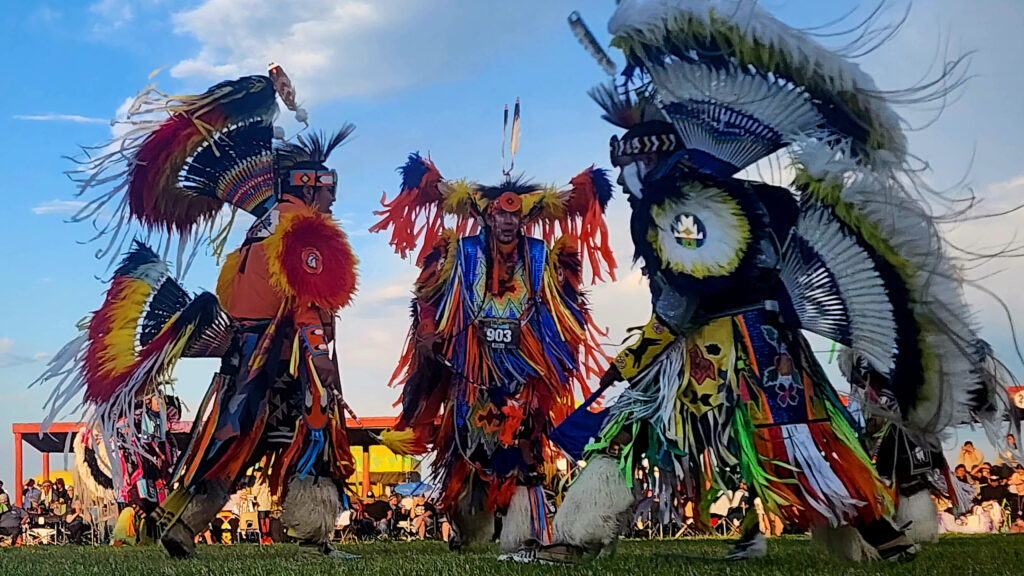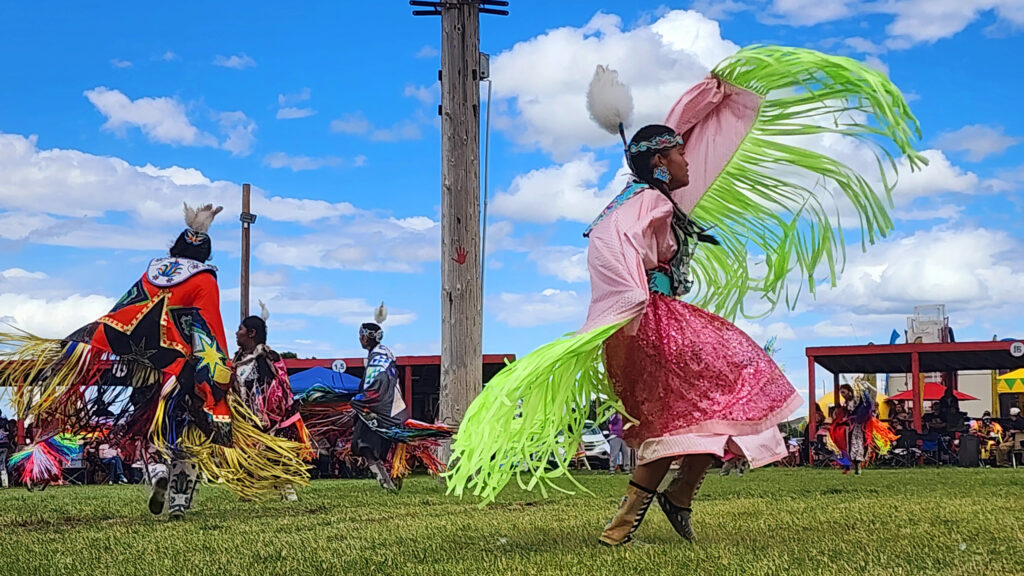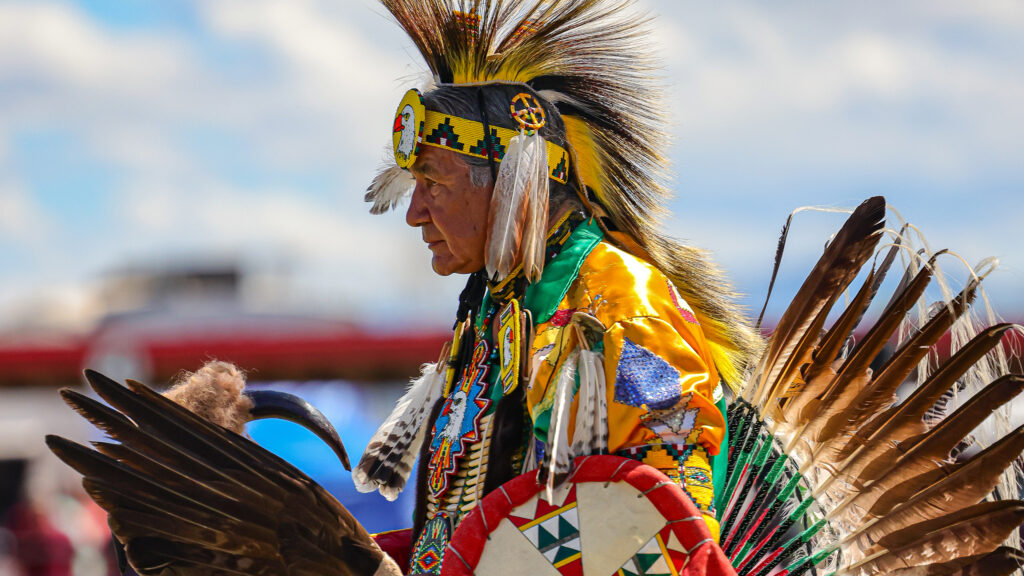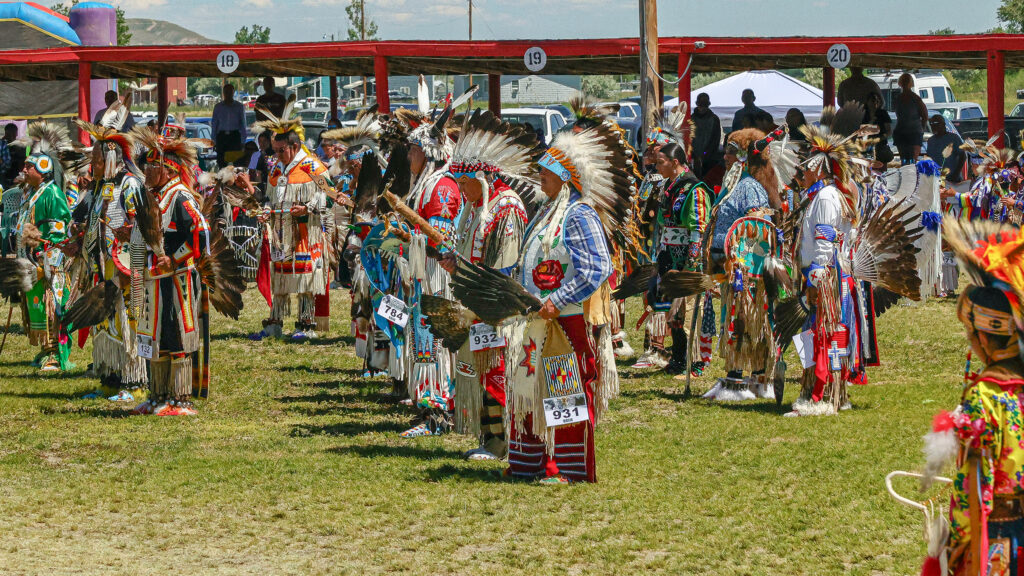December 13, 2023
Feel the drum beat

Photo Credit: Wind River Country/Michael Chingman
Feel the drum beat. Hear the singing. See the colors. Admire the detailed regalia, skilled footwork and precise movements. This is all part of a Native American powwow.
In Wind River Country, there are three large powwows from June through September. The Eastern Shoshone Indian Days Powwow is Wyoming’s largest powwow. The Ethete Celebration Powwow is held in July, and the Northern Arapaho Powwow, held in September, is Wyoming’s oldest powwow. Weekly dance exhibitions are held in Lander and Riverton from June through August.
Embrace the experience
Each powwow begins with a Grand Entry on Friday night, where elders bring in eagle feathers and flags, and all dancers enter the arena. There are also two Grand Entries on Saturday and one on Sunday.
The Grand Entry showcases the regalia dancers wear. There is great pageantry to powwows with exquisitely constructed regalia that is handmade and includes feathers, shells, bones, beadwork and sometimes family heirlooms. Usually everything on the regalia has significance to the dancer. Seeing the regalia—including the bustles and headdresses—up close, you’ll be able to marvel at the intricacies and craftsmanship that goes into each piece. The patterns make the colors flash and swirl when the dancer begins to move.

Photo Credit: Wind River Country/Michael Chingman
Admission to powwows is free. Once there you’ll find vendors selling fry bread, Indian stew and Indian tacos, as well as jewelry and other items.
Powwows today can include games, food and plenty of socializing, but the dancing remains the main event. There are traditional dances passed down through the generations, as well as modern dances created in the last 20 years. Some are competitive, and dancers follow a powwow circuit dancing for prize money. On the Wind River Indian Reservation, usually about 40 percent of the dancers are from Wind River Country, the rest come from across the country and Canada. Drumming and singing accompanies all dancing, and the drumbeat is considered sacred, representing the heartbeat of the tribe. Like the dancers, the drum groups come from across North America. Different groups specialize in different styles of dancing, and each type of dance has its own song.
A powwow isn’t a spectacle; it’s a cultural event significant to participants. A powwow is an incredible way to truly experience the blending of the present and Wind River Country’s history.
If you can’t make any of the scheduled powwows, the Wind River Hotel and Casino hosts dancing exhibitions on Tuesday nights during the summer in its Northern Arapaho Experience Culture Room, and the Museum of the American West hosts outdoor exhibitions Wednesday nights in July and August. These exhibitions are a great way to learn about the dancers and dance styles and to get information on the regalia.

Photo Credit: Wind River Country/Suite1491
Tips, tricks and etiquette
What to bring
- Seating is limited, so it’s a good idea to bring your own folding chair. Blankets on bleachers mark spots for dancers and their family members. Keep access to the arena clear so dancers can move in and out easily.
- When setting up, be mindful of the people around you. Make sure that you aren’t blocking other peoples’ views.
- Bring lots of drinking water.
- Wyoming summers can be hot. Make sure to load up on sunblock. Also, Wyoming evenings can be cool, so pack a light jacket or sweater.

Photo Credit: Wind River Country/Suite1491
How to behave
- Alcohol, drugs and intoxicated individuals are not permitted at powwows.
- Ask questions. If you need guidance or are unsure of something, ask. Most people will be happy to assist you.
- When possible, ask the dancers if you can photograph them, before taking out your camera.
Etiquette
- During the Grand Entry, the dancers, color guard and flags will enter the arena. Out of respect, please stand.
- The regalia that the dancers wear, and the items that they carry, is sacred. If an item falls, don’t pick it up or touch it.
- “Regalia” is the correct word for the clothing that the dancers are wearing. Using the word “costume” is not appropriate, as it is associated with dressing up as someone other than who you are. A dancer’s regalia is a handcrafted piece that has tribal and personal significance.
Confirm the scheduled dates before traveling to a powwow. All powwow dates are subject to change.
Posted in Notes From the Field